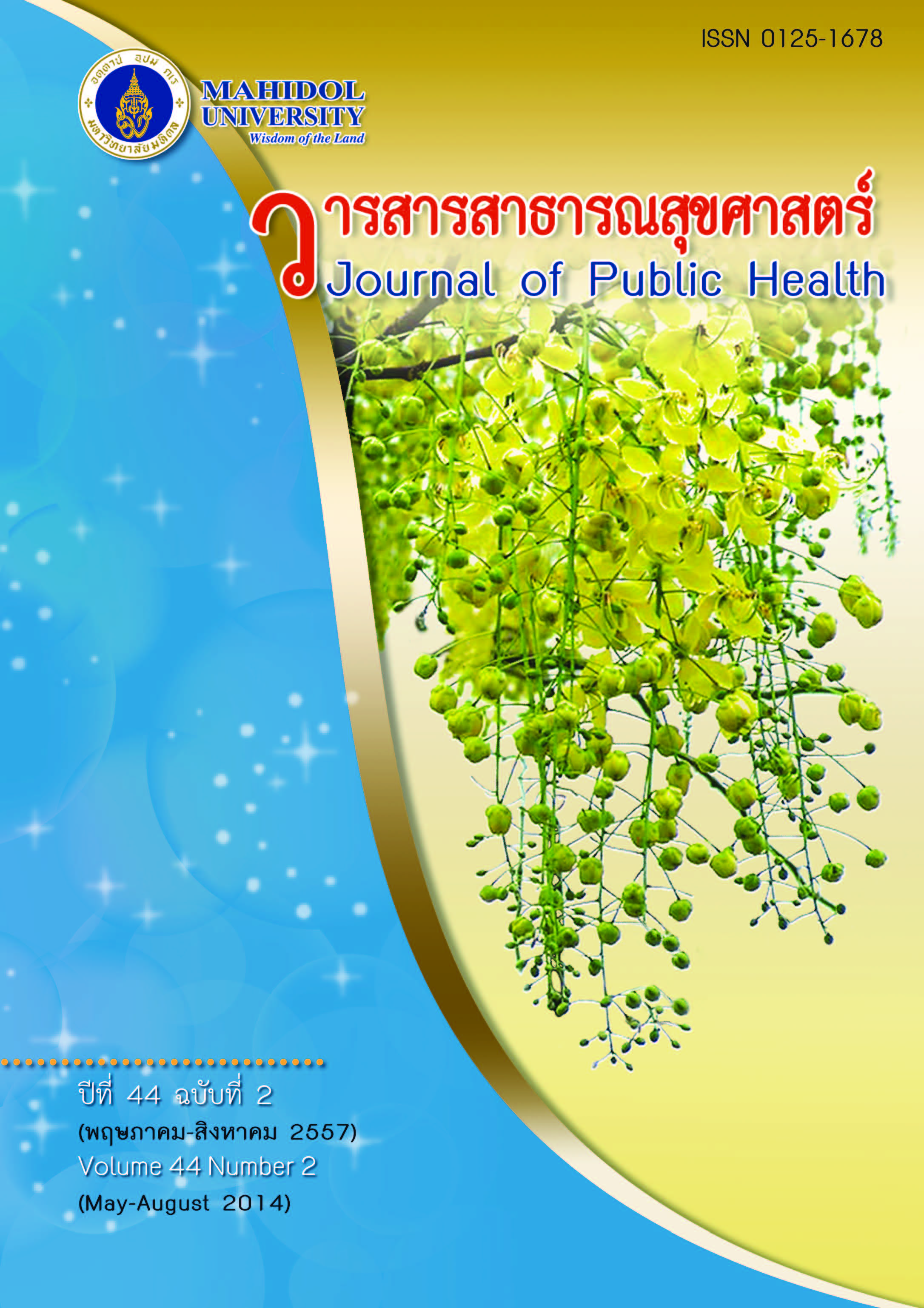การพัฒนาแบบจำลองระบบการส่งต่อผู้ป่วยกรณีศึกษาจังหวัดนครราชสีมา
Keywords:
ระบบการส่งต่อผู้ป่วย, การใช้ประโยชน์จากเครือข่ายโคราช, referral system, Korat UTILIZATION nodeAbstract
บทคัดย่อ
วัตถุประสงค์ของการศึกษาเชิงคุณภาพนี้เพื่อพัฒนาแบบจำลองการส่งต่อผู้ป่วยส่งต่อที่สอดคล้องกับบริบทของจังหวัดนครราชสีมาและนโยบายของโครงการหลักประกันสุขภาพถ้วนหน้าใช้กระบวนการสัมภาษณ์ลึกและสนทนากลุ่ม จากผู้บริหารระดับสูงจากสำนักงานสาธารณสุขจังหวัด โรงพยาบาลตติยภูมิ และโรงพยาบาลทุติยภูมิในนครราชสีมาจำนวน 19 คน แพทย์ผู้ปฏิบัติงานโรงพยาบาลตติยภูมิ จำนวน 19 คน แพทย์ผู้ปฏิบัติงานโรงพยาบาลทุติยภูมิในจังหวัดนครราชสีมา จำนวน 15 คน เจ้าหน้าที่ผู้ปฏิบัติงานศูนย์การรับส่งต่อผู้ป่วยในจังหวัดนครราชสีมา จำนวน 30 คน และผู้รับบริการในจังหวัดนครราชสีมา จำนวน 78 คนใช้เค้าโครงสัมภาษณ์ที่ตอบโจทย์การพัฒนาแบบจำลองระบบการส่งต่อ การวิเคราะห์เชิงเนื้อหาเชิงประเด็นแบบสามเส้าโดยมีแนวคิดเรื่องการพัฒนาแบบจำลองการส่งต่อ ตามกรอบ 7s ของMc Kinsey ผลการศึกษาพบว่าจุดอ่อนที่มีอิทธิพลต่อการพัฒนาระบบการส่งต่อ คือคู่มือในการปฏิบัติงาน ฐานข้อมูลและการเชื่อมโยงฐานข้อมูลเครือข่าย และข้อมูลผู้ให้บริการปัจจัยที่สะท้อนภาพของความสำเร็จอยู่ที่การมีส่วนร่วมจากทุกภาคส่วน พร้อมกับการกำหนดระบบการส่งต่อที่มีแผนงานชัดเจนรวมถึงการติดตามและประเมินผล ทีมวิจัยนำเสนอแนวทางพื้นฐานของการพัฒนาระบบการส่งต่อ เครือข่ายการพัฒนาของระบบการส่งต่อและการเชื่อมโยงในการดูแลสุขภาพระดับปฐมภูมิทุติยภูมิและตติยภูมิและสัญลักษณ์ของเครือข่ายการพัฒนาระบบการส่งต่อสำหรับการใช้ในบริบทของจังหวัดนครราชสีมา คือKorat “UTILIZATION” nodeซึ่งเป็นข้อแนะนำจากการศึกษา คือ การใช้ประโยชน์สูงสุดจากทรัพยากรที่มีอยู่ โดยบูรณาการเรื่องการใช้ทรัพยากรร่วมกัน ร่วมกับการขับเคลื่อนการพัฒนาระบบการส่งต่อภายใต้การบริหารจัดการที่ดีเพื่อการพัฒนาอย่างยั่งยืน
Development of the Structural Model of Referral System: Case Study of NakhonRatchasima Province
ABSTRACT
The objective of this qualitative study is to develop the structural model of referral patient to serve the NakhonRatchasima's health context and the policy of universal coverage project. Nineteen representatives form policymaker tertiaryand secondary care unit, Nineteen medical doctors from tertiary hospital, fifteen medical doctors from secondary hospitals, thirty health personnel, and seventy eight clientswere joined the in-depth interview and focus group according to the triangular method, using Mc Kinsey approach. The analysis and internal validity were conducted and the results revealed that weak points of referral work were practical guideline, database and online link, and services provider information. The reflections of success werestakeholder’s participation, official working plan, including monitoring and evaluation. The researcher team proposed the basic requirement of referral system; the node of referral system and linkage among primary, secondary, and tertiary healthcare; and the symbolic of referral system for being used in local context as Korat“UTILIZATION” node. The clear finding from the study is maximize use of available resources.Thus the integration of resources and mobilize changes for developing the referral system in terms of good management for sustainability is recommended.
Downloads
Issue
Section
License
Creative Commons License CC-BY-ND


